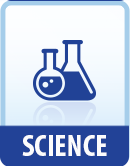|
This section contains 299 words (approx. 1 page at 300 words per page) |
World of Scientific Discovery on Matthias Jacob Schleiden
Matthias Schleiden was born in Hamburg, Germany, in 1804. He did not originally pursue his interest in botany; instead, he studied law at Heidelberg University from 1824 to 1827 (no doubt influenced by his wealthy family). After graduation, Schleiden became a barrister in Hamburg, but he soon grew dissatisfied with his legal practice and suffered a deep depression that culminated in his attempted suicide. He abandoned the profession altogether in 1831 and returned to college to pursue his real interests--botany and medicine. After his graduation, Schleiden became professor of botany at Jena University. Instead of spending his time classifying plants, however, he preferred to observe their development using the microscope because he felt that was the only way plants could be studied.
By 1838 his methods had led him to propose the cell theory for plants. Schleiden was the first to recognize the importance of cells as fundamental units of life. In his most well-known article, Schleiden described Robert Brown's 1832 discovery of the cell nucleus (which he renamed cytoblast). Schleiden knew that the cell nucleus must somehow be connected with cell division, but he mistakenly believed that new cells erupted from the nuclear surface like blisters. Even so, he made other accurate observations about plant cells and cell activity and his conclusions marked the beginning of plant cytology. In 1839, Theodor Schwann would expand Schleiden's cell theory to include the animal world, establishing cell theory as the fundamental concept in biology. Schleiden included this article and others in a botany textbook--one that introduced new teaching methods which would dominate the instruction of botany for years. His approach to educating students was very different, and his liberal views often put him at odds with other scientists. However, his great abilities and his introduction of improved techniques earned him the title "reformer of scientific botany."
|
This section contains 299 words (approx. 1 page at 300 words per page) |


